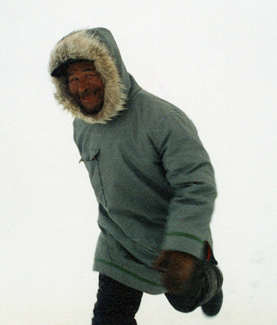In This Issue...
*
F.I.D.O.: Marit Holm
*
Nunavik Dog Slaughters, Part III
*
Greenland Dog / Inuit Dog, The Same Dog
*
Differences in Mushing: Greenland and Arctic Canada, Part I
*
Fan Mail
*
Behavior Notebook: The Human Role
*
Book Review: Frozen Horizons
*
Product Review: Wheel Dog Harness
*
Tip for the Trail: Pack a Pruning Saw
*
IMHO: The System
*
Annual Index for Volume 7
Navigating This
Site
Index of articles by subject
Index
of back issues by volume number
Search The
Fan Hitch
Articles
to download and print
Ordering
Ken MacRury's Thesis
Our
comprehensive list of resources
Talk
to The
Fan Hitch
The Fan
Hitch home page
ISDI
home page
Editor's/Publisher's Statement
Editor: Sue Hamilton
Webmaster: Mark Hamilton
The Fan Hitch welcomes your letters, stories, comments and suggestions. The editorial staff reserves the right to edit submissions used for publication.
Contents of The Fan Hitch are protected by international copyright laws. No photo, drawing or text may be reproduced in any form without written consent. Webmasters please note: written consent is necessary before linking this site to yours! Please forward requests to Sue Hamilton, 55 Town Line Rd., Harwinton, Connecticut 06791, USA or mail@thefanhitch.org.
This site is dedicated to the Inuit Dog as well as related Inuit culture and traditions. It is also home to The Fan Hitch, Journal of the Inuit Sled Dog.
The System
by Mark Hamilton
This past season we moved Aqsaq up to the position of single lead dog in Qiniliq's group. What you need to know right now about Aqsaq is that she is an opportunistic, fence-fighting, back-biting, always ready-to-brawl, hair-triggered daughter of two Arctic veterans. As odd as it sounds for me to say it, she was our only reasonable option for the lead dog position in that group. Both Puggiq and Amaruq were by then gone from the group. Sunny was too young and foolish to accept the responsibility. Qiniliq had enough to do learning how to be the group's new boss dog.
Aqsaq had never actually led a team before. All her experiences in front of a team were limited to merely running alongside her mother. Once on her own it took a few runs before she began to really focus on the task at hand. But getting her to respond to our commands was as simple as praising her for any correct behavior. Aqsaq is extremely driven to seek and receive praise. By mid-season she was a reliable lead dog, confidently following every command while moving the team at a steady pace. Aqsaq's ability to focus on this task allowed us to drive her team past a couple of rather startled herds of white tail deer without her leading the dogs off on a killing spree. She was also enjoying every minute of her responsibilities.
But don't be mislead by any of this. Aqsaq hasn't reformed from acting on her ignoble instincts at opportune moments when not in harness. She is still "Aqsaq the Awful", initiating fence fights, knocking Sunny around for offenses both real and imagined, and bellowing for her food. Even Qiniliq, her pack's boss, gives her some extra space and indulges many of her behavioral eccentricities.
Teaching a new skill set to a dog improves your relationship with that animal. It improves your overall level of control over the animal as well. But don't expect it to change everything else about the dog. If you want a dog to do something or not do something, your best, most reliable option is to train them to do or not do it.
I find it very distressing when I hear someone brag how smart their dog is because it does something flawlessly, and then expresses complete dismay with the animal because of some other behavior it exhibits that the owner finds unacceptable. That person is stuck, totally unable to accept or understand that just because their dog can do "A", it in no way implies it won't still do "B". They can't envision that if they don't want their dog to do "B" the only way to extinguish the behavior is either train their dog not to do "B" or if they totally avoid the circumstance under which "B" occurs.
Primitive breed dogs, being what they are, can have a lot of that "B" behavior in them. Owners need to recognize this and act accordingly. Specifically, Inuit Dog owners need to be prepared to do a lot more training than owners of the less challenging breeds. And that means we personally need to be open to learning new approaches, techniques and ways of analyzing the behaviors we seek to modify.
I make it a point to both speak with and listen to trainers who have already demonstrated a solid record of success in dealing with primitive dog breeds. To me it makes a lot more sense if I talk with someone who has been successful in something I want to accomplish, than it would be for me to share information about a training failure with someone who is struggling with the exact same problem.
Ten or so years ago, when I was still raising and training Alaskan Malamutes, I didn't think this way. Now I'm a product of the system, and that system is the mentoring system. I appreciate all help I've received of those who mentored me. And I appreciate the people who have done that mentoring. I still seek mentoring when I have problems, as I intend to do for the rest of my life. This column is my public thank-you to my mentors.

My first ISD mentor, Jayko Ootoowak,
running
along side his
qamutiq.
Photo: Hamilton